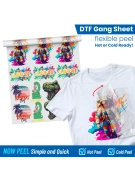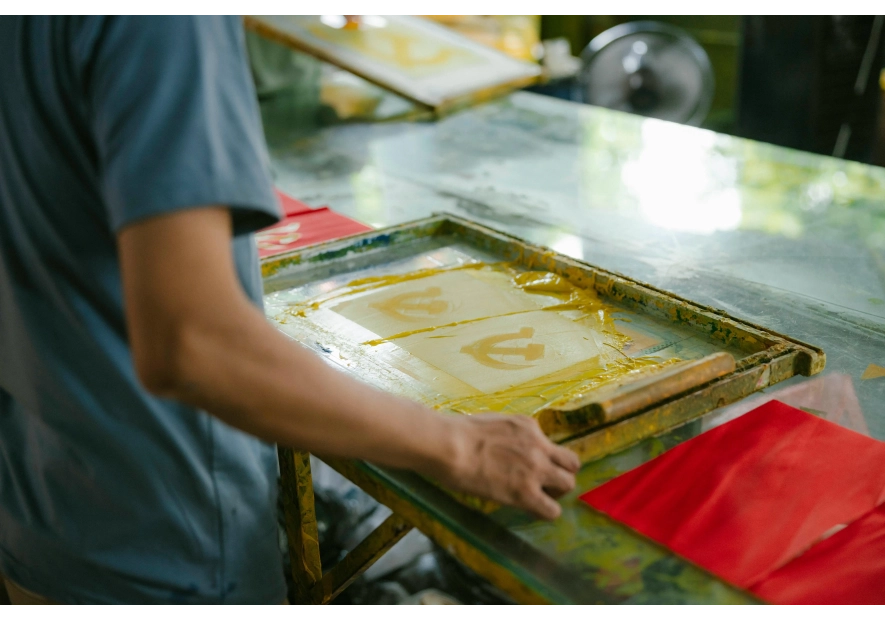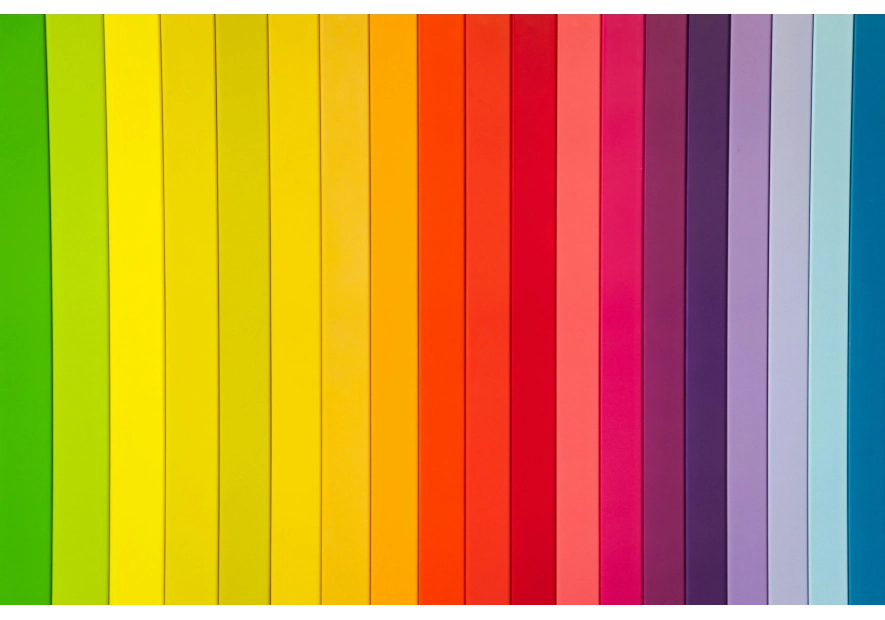Screen Printing vs. DTF: Evaluating the Best Fit for Your Needs

If you’re weighing screen printing vs DTF, you’re already asking the right questions. Choosing a printing method helps you align with your business goals, your creative process, and the type of product you want your customers to love. However, with so many options out there, it can get overwhelming fast. Understanding the strengths and limits of screen printing vs DTF printing helps you make informed, scalable choices.
Ahead are detailed insights to help you pick the right tool for your brand.
What is Screen Printing and DTF?
Whether you are launching your first drop for an online store or are simply tired of wasting time and money on the wrong print methods — understanding the basics of screen printing vs DTF will help you make an informed choice.
Screen Printing
Screen printing is an old-school method. It uses mesh screens, ink, and a squeegee to press designs onto fabric. Each color in the design needs its own screen, which means the setup takes time and effort. But once it’s ready, it can pump out hundreds of identical prints with speed and consistency. This method is well-loved for its bold, saturated colors and durability. It’s the go-to for many established print shops and big orders that don’t change often. It is mostly used for products like band tees, event merch, or bulk uniforms where the same design repeats again and again.
DTF (Direct to Film) Printing
DTF printing starts with a design printed onto a special film, which is then dusted with adhesive powder and cured. That design can be transferred onto almost any fabric using a heat press. It does not use any screens, it’s not messy, and there are no limitations on color or complexity. DTF makes it easy to print full-color, photo-quality artwork with incredible detail. It’s ideal for small batches, on-demand printing, or personalized items. And since it doesn’t need separate setups for each new design, you can swap artwork on the fly. It's a dream for people who want creative flexibility.
Print Quality and Design Complexity
Screen Printing Shines in Simplicity
Screen printing is amazing for bold, simple graphics with solid blocks of color. Think logos, typographic designs, or illustrations that don’t rely on shading or photo realism. Because each color is applied separately, the fewer the colors, the cleaner and cheaper the job. And once the setup is done, the prints come out vibrant and durable, wash after wash. However, screen printing hits a wall when you get into gradients, shadows, or hyper-detailed artwork. It’s just not built for that level of nuance.
DTF Wins with Detail and Color
DTF, on the other hand, thrives where screen printing struggles. Want to print a colorful portrait? A subtle gradient? A design with ten colors? Go for it. DTF handles complexity with ease because it prints digitally in full color before transferring the image onto fabric. This makes it a favorite for fashion-forward pieces, limited edition runs, or brands that want to play with bold visuals without being boxed in by technical limitations. This results in prints that pop, even on dark or synthetic fabrics, without compromises.
Fabric Compatibility and Versatility
Screen Printing Plays Favorites
Screen printing works best on cotton and cotton-blend fabrics. While some pros know how to make it work with polyester or specialty materials, it takes finesse, and sometimes compromises the look or feel of the final print. That’s fine if you’re printing standard tees. But what if your customer wants a custom bomber jacket? Or a nylon tote? That’s where screen printing starts to show its limitations.
DTF Prints Almost Anything
With DTF, fabric limitations are far less of a concern. Cotton, polyester, canvas, fleece, denim, Lycra — it can all be printed with a consistent, vibrant result. This kind of flexibility opens up doors for brands who want to experiment with product variety or scale quickly without switching machines or methods. In the screen printing vs DTF conversation, versatility gives DTF a clear edge for modern businesses that value adaptability.
Production Volume and Workflow
For Bulk Orders, Screen Printing Speeds Ahead
If you’re printing a few hundred identical shirts, screen printing’s efficiency really shines. Once the setup is done, the process moves fast. One pull of the squeegee, one shirt down. It’s like an assembly line made for volume. Because of this, screen printing tends to have a lower cost per unit on large orders. But the setup requires time, labor, and materials to prepare the screens, align the artwork, and test colors. That prep work makes small runs feel like more hassle than they’re worth.
For Small Runs and On-Demand, DTF Steals the Show
Now if you’re doing short runs like 5, 10, or even 50 units, or constantly switching designs, DTF is much more time-efficient. There’s virtually no setup. Just print your film, press it, and move on. This flexibility is amazing for businesses that want to offer customization, print-on-demand drops, or seasonal collections. You can fulfill orders as they come without wasting time on outdated inventory or unused screens.
Durability and Wash Performance
Screen Printing is Built to Last
Screen printing is trusted when it comes to durability. The ink bonds directly with the fabric fibers and can last for years, especially when done correctly. It can handle wash after wash, tumble after tumble, without cracking or fading. However, durability depends on proper curing, fabric choice, and ink type. A rushed or poorly set screen print can still peel or fade. So while screen printing has the potential to be ultra-durable, it’s not a guaranteed win unless everything is done right.
DTF is Surprisingly Tough
DTF might be new, but it’s holding its ground in the durability department. Thanks to its adhesive powder and heat press method, the film bonds snugly with the fabric surface, creating prints that resist cracking and peeling under everyday use. Many users report that DTF prints last just as long as traditional screen prints, especially when washed with care. Plus, since it’s not restricted by fabric type, that consistency is easier to maintain across different product lines. So, while both methods are built to last, DTF makes that durability more accessible without extra steps or specialized inks.
Cost Efficiency
Screen Printing is Economical at Scale, Expensive to Start
Screen printing is often touted as “cheaper,” and it can be once you’re printing in bulk. The catch is in the setup. The screens, the film, the labor, the test print — all of that adds to your upfront cost. If you’re only printing 20 shirts, that setup cost gets divided across a small number, making each shirt pretty pricey. But if you’re printing 500? That cost spreads thin, and your per-unit price drops significantly. Also, every color adds another screen. So the more complex your design, the more setup costs stack up.
DTF Pays for Flexibility, Saves on Setup
With DTF, there’s essentially no setup. And that’s huge. Whether you’re printing five shirts or fifty, your cost-per-piece stays relatively steady. There’s no price penalty for full-color or photorealistic artwork, either. This makes DTF incredibly cost-efficient for small businesses, creators, and anyone working with low to medium volumes. You don’t have to commit to huge orders or worry about stocking extra inventory just in case.
Environmental Impact and Waste Consideration
Screen Printing is Traditional, But Not Always Clean
Screen printing tends to create more waste — from leftover ink and emulsion to the water used in screen cleanup. If you're not working with eco-friendly inks or reclaiming screens, you’re looking at a heavier environmental load. Also, because it’s built for larger runs, screen printing often leads to overproduction, which means unsold inventory and excess waste.
DTF is Less Wasteful
DTF offers a more controlled, on-demand process. Since you’re printing only what’s needed, it reduces the chance of leftover stock. Plus, there’s no water waste from washing screens or disposing of extra ink. It’s cleaner and leaner by design. While no method is zero-impact, DTF gives creators a better shot at building a more sustainable workflow, especially when paired with mindful sourcing and efficient packaging.
Choosing What Works Best for You
At the end of the day, there’s no one-size-fits-all answer to the screen printing vs DTF debate. It comes down to what you’re printing, how often, for whom, and how fast you need to get it done. Screen printing has longevity. DTF has flexibility and freedom. If you’re looking to start strong, stay agile, and print without the headache of traditional setups, DTF might just be your perfect match.
Want to see if DTF can work for your business?
Explore easy, high-quality transfer solutions with DTF Transfers Now. Whether you’re printing one shirt or one hundred, we’ve got the film, the tech, and the turnaround to help you thrive. Explore a world of opportunities now.





Leave a comment